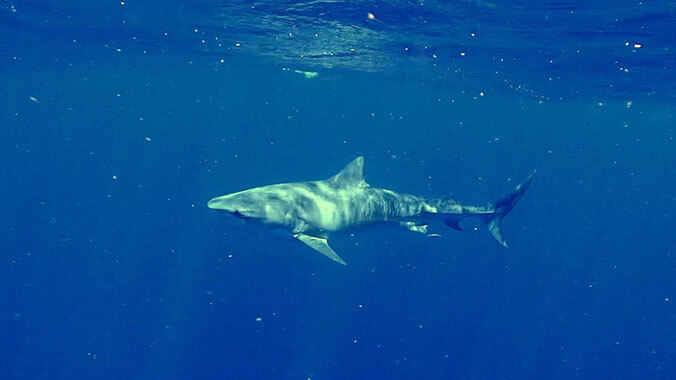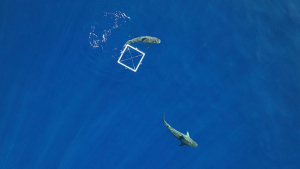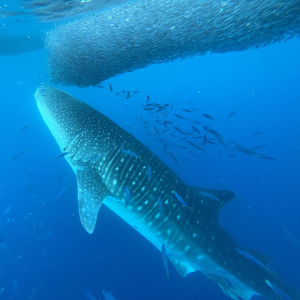
Sharks, a species often misunderstood and feared, play crucial roles in ocean ecosystems as top predators. In honor of Shark Awareness Day on July 14, UH News interviewed shark expert Carl Meyer, researcher at the University of Hawaiʻi at Mānoa Hawaiʻi Institute of Marine Biology, on the importance of sharks to ocean health, common misconceptions and safety tips for being in the ocean.

What types of sharks do you study?
Our research focuses on coastal species such as tiger sharks, Galapagos sharks and scalloped hammerhead shark; bathyal or deep sea species such as bluntnose sixgill sharks, prickly sharks and Pacific Sleeper sharks; and enigmatic pelagic species such as oceanic whitetip sharks and cookiecutter sharks. We use technology to reveal the hidden lives of sharks. For example, we attach sophisticated biologging devices to sharks that track their movements and swimming behavior and give us a shark’s eye view of their lives. These devices help us to understand where sharks roam and how they use their natural habitats.
Why are sharks important to ocean ecosystems?

Sharks are very important for the health of ocean ecosystems. They are top predators that regulate the populations of other animals in the ocean and ensure that no one species becomes dominant and disrupts the marine ecosystem. Sharks are indicators of ocean health. If you have abundant sharks, then your ecosystem is healthy. If you see a decline in sharks, it indicates that there may be a problem with the marine environment.
What are common misconceptions people have about sharks?

The single biggest misconception that people have about sharks is that they’re all dangerous. And this is simply not the case. Most shark species represent little or no threat to humans simply because they consume very small prey, and even the species that we might consider to be dangerous such as tiger sharks, white sharks and bull sharks, actually bite people very infrequently. So these are rare events. Although we might consider them to be dangerous, in fact, we are a lot more dangerous to sharks than sharks are to us. We need to address these misconceptions about sharks in order to have effective conservation measures that allow us to coexist successfully with these really ecologically important predators.
Are sharks mistaking people for prey?
So when sharks bite humans, it’s likely because people in the water have size and movement characteristics that make sharks view them as potential prey.
The mistaken identity hypothesis is a popular misconception that stems from viewing shark behavior through a human lens. Sharks are not mistaking humans for another type of prey. They are opportunistic predators that routinely explore objects with certain size and movement characteristics to see whether they are potential prey. So for example, when we put small video cameras on tiger sharks, we see them routinely investigating inanimate objects like floating coconuts, leaves, plastic bags, those are clearly not things that they’re going to eat, but they go and they investigate them to see if they are potential prey. So when sharks bite humans, it’s likely because people in the water have size and movement characteristics that make sharks view them as potential prey.
What are some safety tips you recommend?
Although the risk of being bitten by a shark is very low, there are some things that we can do to reduce the probability of being bitten and also to improve the outcome in the event that we encounter a shark that tries to bite us. The single biggest thing that we can do is to always do our ocean recreational activities with other people. There is more safety in numbers. It reduces the probability of you being bitten. And if you are extremely unlucky and you get bitten, then there are other people around to help you. So a lot of the time when there’s a shark bite incident, the severity of the outcome is determined by whether there’s somebody close at hand to help the person that’s injured.

